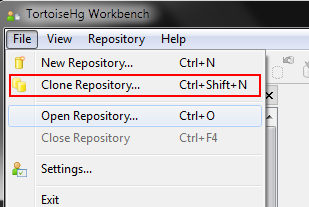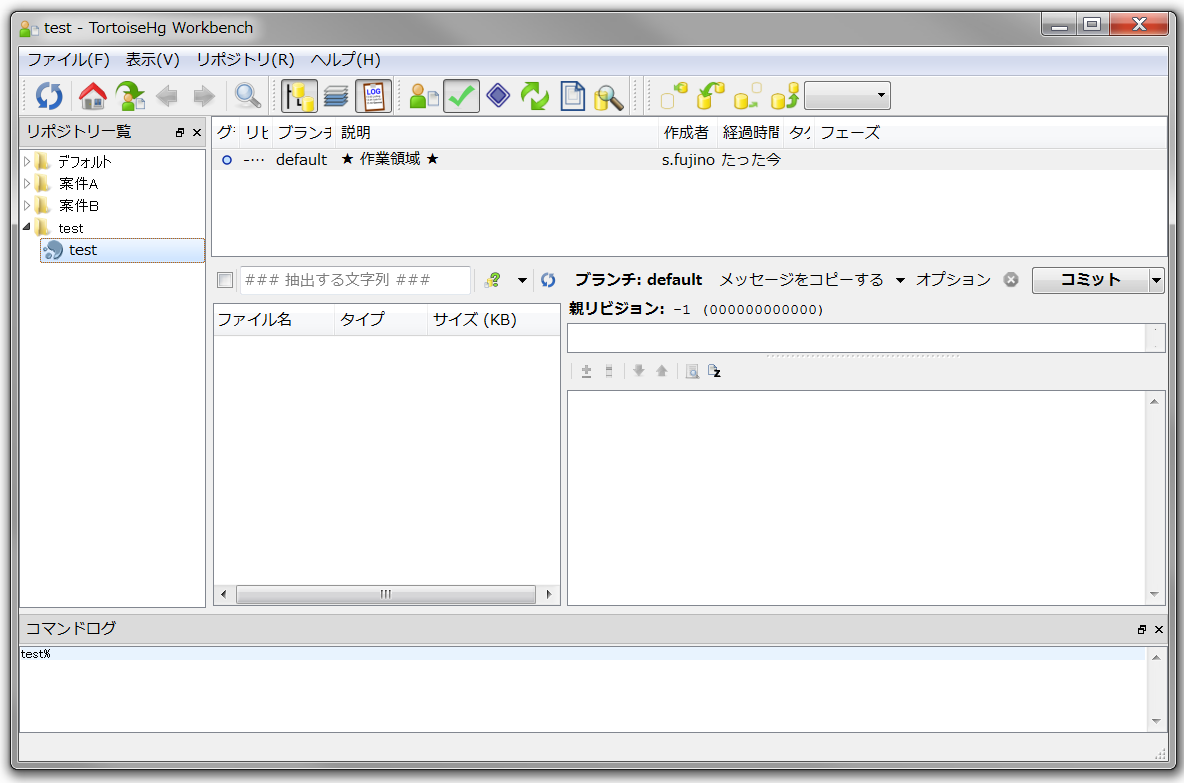

- TORTOISEHG WORKBENCH HOW TO
- TORTOISEHG WORKBENCH UPDATE
- TORTOISEHG WORKBENCH PASSWORD
- TORTOISEHG WORKBENCH WINDOWS 8
The backout commands creates two additional changesets, probably 104 and 105. It's easier to do this from the command-line: hg up 101 Instead, you could backout the redundant changes and rebase your latest changes on top of the initial branch: In this case you can't simply delete them. With the second head removed, you should now be able to push your changes.Įdit: I just noticed that you probably already pushed the changesets 100/101 to the remote server. You can also do this from the terminal with hg strip 100. The function removes the selected changeset and its children. Now right-click on changeset 100 and select Modify History > Strip from the context menu. First ensure that the strip extension is activated ( File > Settings > Extensions).
TORTOISEHG WORKBENCH PASSWORD
You need your Windows user and password to access the repository.If you don't need the two changesets 100 and 101 and want to get rid of them, you can delete (strip) them from the history. You can use HG Workbench to push to and pull from the repository. Open c:\Build\test\.hg\hgrc with your favourite editor and add these lines.ĭefault = Of course, you need to modify the path and the URL. To let TortoiseHG to accept the certificate. Right-click it and select TortoiseHG, Create Repository Here. Prepare an empty directory c:\Build\test. Replace the first line with your Mercurial repository path and the second line with its description. Enable Basic Authorization and disable Anonymous Authorizationĭouble-click SSL Settings and check SSL is required.Ĭreate a text file c:\WebApps\Mercurial\test.

Select Mercurial and double-click Authorization. Right click on Default Web Site and select Add Application and name its alias Mercurial. Right-click Default Web Site and select Edit Bindings and choose the certificate just created.Ĭreate a directory for the application c:\WebApps\Mercurial, then make a python script c:\WebApps\Mercurial\bin\Mercurial.py. Select the root node and double-click Server Certificate.

Openssl pkcs12 -keypbe PBE-SHA1-3DES -certpbe PBE-SHA1-3DES -export -in cacert.cer -inkey privkey.pem -out privkey.pfx -name "IIS Certificate" Openssl req -new -x509 -key privkey.pem -days 365 -out cacert.cer Openssl genrsa -des3 -out privkey.pem 2048
TORTOISEHG WORKBENCH HOW TO
There’re many web site that explain how to make a certificate with OpenSSL.

IIS Manager can create a self-signed certificate, however, Python doesn’t like a certificate created by IIS Manager. A self-signed certificate doesn’t cost and works on a small organization. To enable SSL, you need a security certificate. Select Internet Information Service and CGI and Basic Authentication.
TORTOISEHG WORKBENCH UPDATE
Go to the Control Panel, Program, Enable and disable Windows features. If you use the TortoiseHg client, TestComplete will open the TortoiseHg Workbench, where you can view the revision history and update your local repository to. Type c:\Python27\python.exe to launch Python installer. Launch Command Prompt and move to an empty directory. If the installation is successful, you can use Mercurial API from Python. There have been a couple of TortoiseHg releases in the past where the bundled version of hggit of didn’t work. Mercurial installer automatically detects Python installation. TortoiseHg comes with hggit bundled so you can be enable it by going to File > Settings and then under the global settings tab and extensions option as seen in the screenshot below tick hggit and then restart TortoiseHg. Then doubleclick mercurial-2.3.win32-py2.7.exe and choose the default settings. Probably 64-bit Python and Mercurial works, but I use some x86 programs which use Python DLL and want to share it.įirst double-click python-2.7.3.msi and choose the default settings. Download Python 2.7.3 Windows Installer from and Mercurial MSI installer – x86 Windows – requires admin rights from. You need to choose the right combination of versions and installation types. Setting up Python 2.7.3 and Mercurial 2.3
TORTOISEHG WORKBENCH WINDOWS 8
I’m going to use IIS 8.0 on Windows 8 64 bit, Python 2.7.3 and Mercurial 2.3. However, on Windows, there’s no straightforward way to set up an SSH server. You can just place repository files under your home directory and use it via SSH. On Linux and Mac OS, setting up a Mercurial repository is easy.


 0 kommentar(er)
0 kommentar(er)
